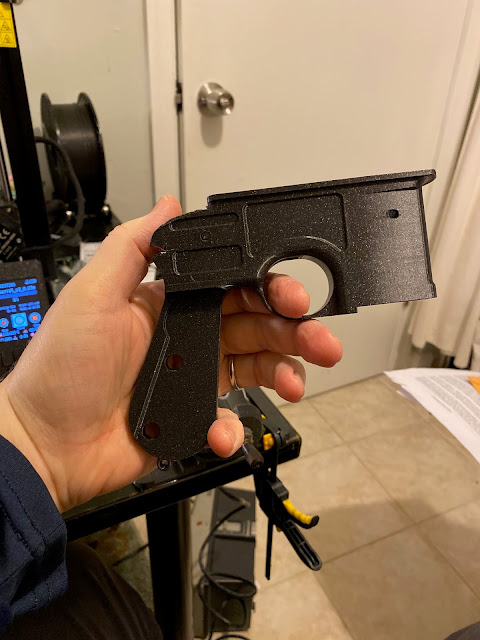So I bought a low-cost spool of OVERTURE 3D PETG from amazon - it was on sale for $21, so I went for it. First off, Overture's packaging was good and came with a 20cm x 20cm build surface sticker. It's too big for the mini, but might come in handy with my MonoPrice printer at the office. It also came with an overture branded ruler/card type thing that's making a nice bookmark in my Foundation and Empire book. Trying to read them before the series drops on AppleTV+, but I digress.
My first print was a small tilt box I found on Thingverse. It came out really well!
It also came off the bed with out any issue (more on that in a few).
Next up I wanted to print some buckles that would work with some web strapping I have around the house from a previous halloween costume build. There were a few out there, but this one on the Prusa Prints gallery was the one I went with. I printed it twice, with supports both times. Not sure if I needed them or not, but it looked like some of the spans might be too big to cover with out supports. They came out great and work pretty well. I left the straps extra long so I can tie a knot if the buckle fails on me just in case.

The only issue I had was taking the brim and support material off the standard prusa mini bed. It was stuck on like superglue. I almost scratched the bed trying to get the excess off. It took some searching to figure out what was different. In the tilt box case, I let it run over night and took it off the build plate the next morning. With the buckles, I was printing them back to back and trying to remove them without letting everything become truly cold. In the various forums I see all kinds of tips and tricks - glue stick, windex, other release agent kind of stuff. Then I decided to see what the manual said. Should have started there in hindsight.
Heatbed: Various manufacturers suggest using various separation (or adhesive) layers for
printing PETG, such as Kapton tape, glue stick, etc. Our print sheets work fine without these
separation layers but it’s important to know a few basic rules. First, keep the print surface clean.
When printing on a smooth sheet, use a window cleaner instead of isopropyl alcohol. Textured
powder-coated sheets can be cleaned with IPA. Once you finish printing, let the print cool before
you try to remove it from the sheet.
And there it is. Let it cool completely before removing. I will probably try using windex to clean the bed next time instead of the alcohol wipes, but other than that, patients will be my go-to move.



























